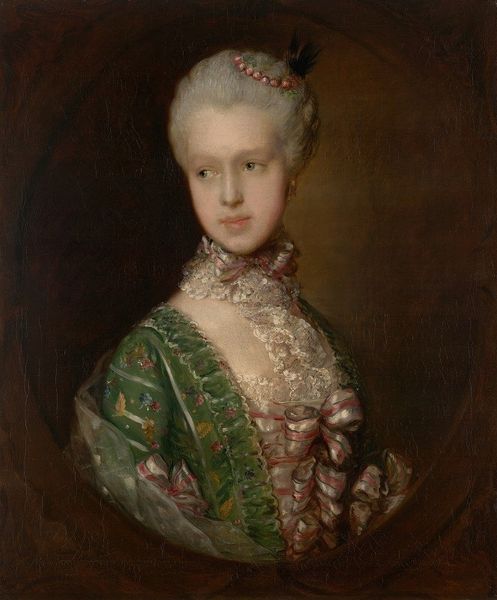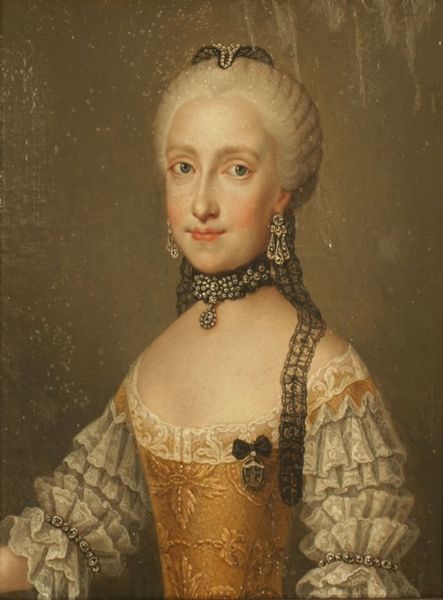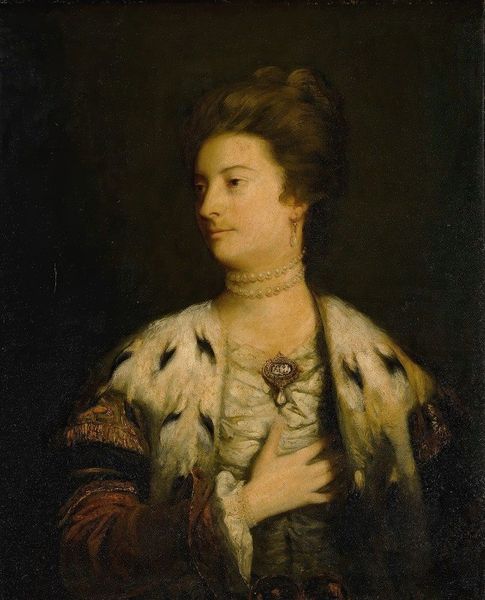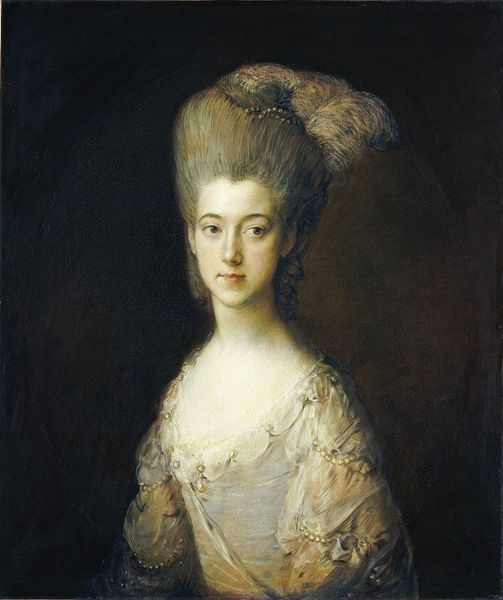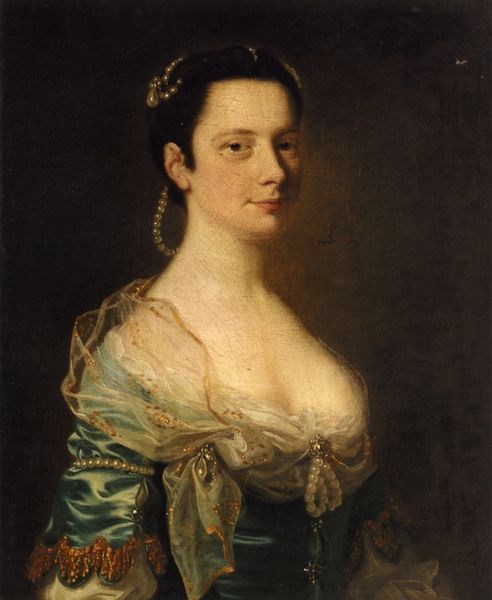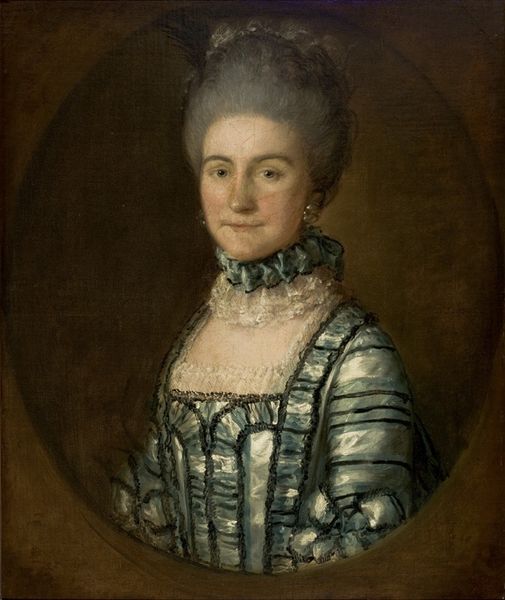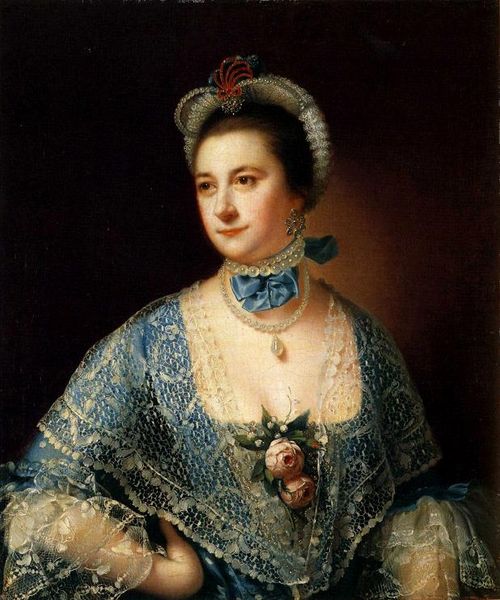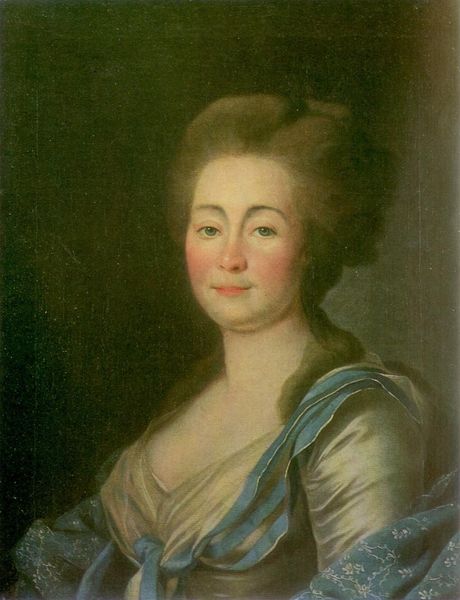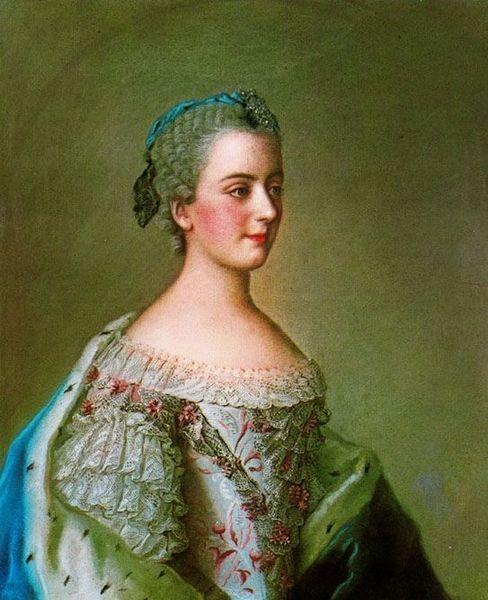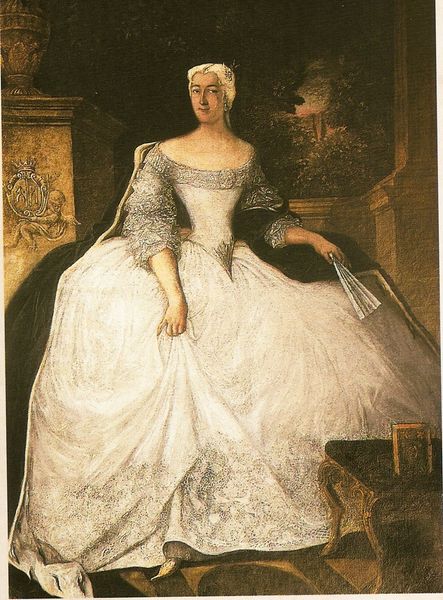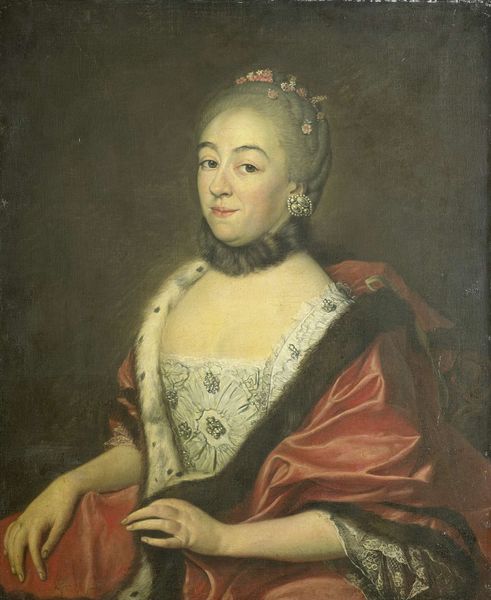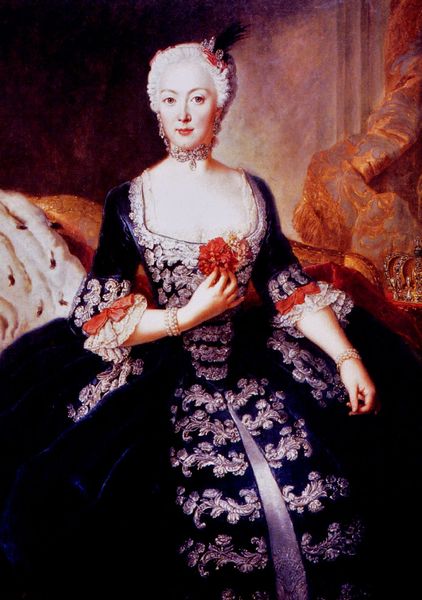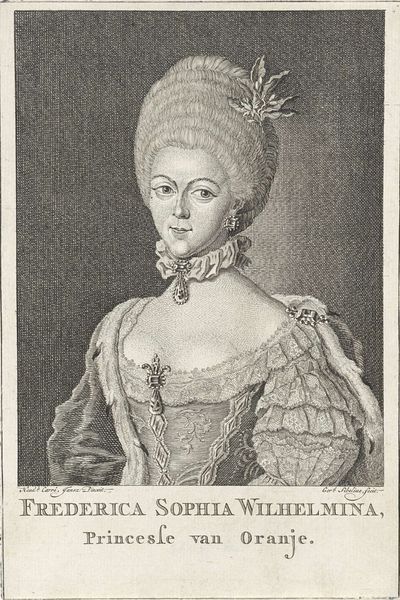
Dimensions: 76.2 x 63.5 cm
Copyright: Public domain
Curator: Today we’re examining Thomas Gainsborough’s oil on canvas portrait, "Elizabeth Wrottesley," painted around 1765. It is currently held in a private collection. Editor: It has a melancholic air, wouldn't you say? The deep browns and shadowy backdrop almost swallow her whole. But the ruffles around her collar frame her face, drawing the eye right back to her placid, subtly guarded expression. Curator: Gainsborough painted many portraits of women during his time. When considering paintings such as these, one has to wonder the extent to which class and gender conventions play a role. This portrait has a slightly softer and less overtly glamorous feel than some of his other works, such as his various aristocratic paintings. What’s interesting here is that there is little ostentatious symbolism in the portrait. Editor: Exactly. It brings her humanity forward. While that lace and the sheen of her dress undeniably speak of wealth, I can’t help but be drawn to her gaze. It suggests an awareness, an inner life that surpasses her status. The ornate collar almost appears as if the frills frame her face and point viewers' attention back to her expression. There’s almost an interplay there. Curator: In viewing "Elizabeth Wrottesley" through an intersectional lens, it would be interesting to look at how the social construction of femininity impacts readings of 18th century portraits of this kind, but this also leads to many broader interpretations. The male gaze cannot be ignored, as male artists inevitably played into these gender expectations. Yet Gainsborough provides this portrait a sense of emotionality through her look and gaze, complicating our understanding of portraiture during the eighteenth century. Editor: I agree completely. Perhaps what strikes me most is how Gainsborough manages to both capture the status and the soul, using familiar symbols—lace, jewelry, expensive cloth—while hinting at something far more complex beneath the surface. It’s an intersection in itself. Curator: Thinking about that tension and inherent dualities offers some valuable ways to recontextualize portraiture like this within both its time period, and our own. Editor: Indeed, and her subtle look encourages a feeling of introspection for both sitter and viewer.
Comments
No comments
Be the first to comment and join the conversation on the ultimate creative platform.
